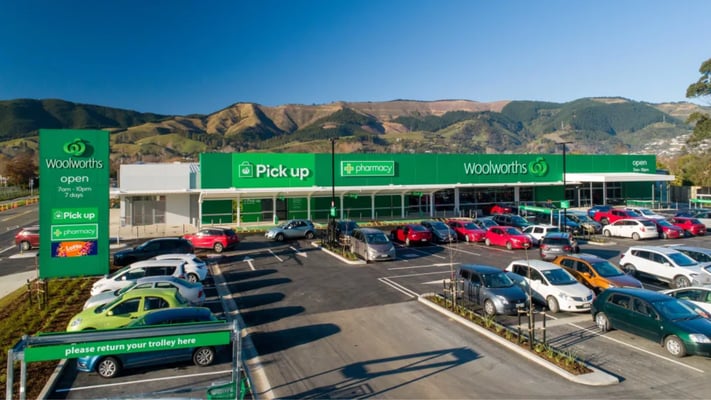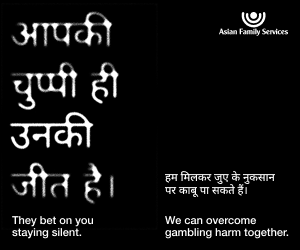Why Does Woolworth's Look Like It's Struggling?

We have heard a lot in recent years about supermarkets and how much money they make. Too much money, according to some.
Understandably, there was some head-scratching when Woolworths New Zealand last week reported a 42 percent drop in pre-tax earnings, to $71 million in the six months ending in December.
While overall the company's half-year earnings were up 3.3 percent, trading performance had been hampered by the New Zealand business. And the company's shares were on track for their worst losses in years.
"The trading performance in New Zealand Food has continued to be challenging," Woolworths Australia said in a stock exchange statement.
At the same time, the company's chief executive Brad Banducci resigned, days after walking out of an interview with the Australian Broadcasting Corporation. Chair Scott Perkins said Banducci's departure had been in train for some time.
Background
In Aotearoa New Zealand, two supermarket companies - Foodstuffs and Woolworths - have an effective duopoly over the grocery sector, with a fringe of other competing outlets.
Australia's Woolworths operates the New Zealand stores, previously Countdown, along with Fresh Choice and Super Value chains. Local co-op Foodstuffs runs the New World, Pak'nSave and Four Square chains.
During the 2020 Level 4 lockdown, butchers, bakers and other food providers were forced to close, while supermarkets - deemed essential businesses - remained open. Complaints about price gouging made headlines.
In November that year, the government asked the Commerce Commission to carry out a study into whether competition in the sector was working well and if not, what could be done to improve it. The final report - published in March 2022 - found competition was not, in fact, working well for consumers.
The report highlighted the profitability of the major grocery retailers appeared "higher than expected" and prices also appeared "relatively high" by international standards.
"We have found that the intensity of competition between the major grocery retailers who dominate the market, Woolworths NZ and Foodstuffs, is muted and competitors wanting to enter or expand face significant challenges," commission chair Anna Rawlings said.
While the commission stopped short of a radical shake up of the $22 billion sector, it made some recommendations aimed at helping increase competition.
Then-commerce and consumer affairs minister David Clark said moving forward there would be a new regime around wholesale supply, as well as a mandatory code of conduct, addressing issues like bargaining power and resolution schemes. He said supermarkets could immediately take action, including around transparency on prices and loyalty schemes.
Then, in January 2024, the commission opened an investigation into the supermarkets' pricing and promotional practices, following a complaint from Consumer NZ about potential breaches of the Fair Trading Act.
Current Consumer Affairs Minister Andrew Bayly backed the investigation and said he believed the commission should be undertaking reviews on other aspects of the supermarkets' operations.
Under the coalition agreement, there would be scrutiny of whether the grocery commissioner's powers needed to be strengthened.
The same month, Australia launched a wide-ranging review into pricing and competition in its supermarket sector.
The slowdown
Food prices increased 8 percent in the year from September, 2022, according to Statistics New Zealand.
A Canstar survey published in 2023 suggested the cost of groceries was a bigger worry for Kiwis than the cost of housing.
There are many possible reasons for price rises: labour costs, supply chain constraints, and the rising cost of food production, for example.
"Supermarkets made a lot of money during the pandemic," said Devon Funds head of retail Greg Smith. "Arguably, they made super normal profits. And that's slowing down now."
At the same time, inflation is catching up with them.
"People are spending less, and are more careful with their spending, than two years ago," he said. "[Supermarkets] are still making earnings, just not at the same pace as before."
Woolworths has also significantly increased the retail wages paid to store teams in New Zealand and, to a lesser extent, Australia.
From early 2024, New Zealand's Countdown stores were rebranded as Woolworths. The change was part of a $400 million, three-year transformation including store upgrades, a revamp of its loyalty programme, and expansion of its online offerings.
"There are those one-off costs," Craigs Investment Partners investment director Mark Lister told RNZ. "But also like any business in New Zealand, rates will have gone up, along with insurance costs and other bills. It might look from the outside like they're printing money, but we're forgetting they have their own costs and expenses, too."
In addition, the Australian bosses had to write down the value of the New Zealand business by $1.6 billion, to $700 million.
It was the first review of the goodwill on the parent company's balance sheet since Woolworths bought the Foodtown supermarket chain in 2005. But what does that mean?
In short, goodwill represents the value of intangible assets.
"It's something you do when it becomes clear that an asset you own shouldn't be valued as highly as it is," Lister said. "It doesn't impact money in and out the door."
The big picture
The New Zealand portion is roughly 10-12 percent of the Woolworths business, Lister added.
"Of course, it's big to us, but quite small in the context of the overall business."
And the overall result, while weaker than analysts were hoping for, was still "OK".
The takeaway is that high revenue doesn't always equal high profits, he said. What consumers see is not the full picture.
"This is true of any business.
"We think that because prices are higher than last year and stores look busy, things must be great for this company. What we don't see or necessarily appreciate is what is happening to their costs and how much is left over in terms of profit.
"Revenue was up, but earnings - once you've taken off costs and expenses - were down 40-odd percent. And that's what's driven what was for New Zealand Woolworths, a poor result."
And for those still upset about the company's profitability, he noted many New Zealanders were shareholders of Woolworths, without knowing it.
"You're probably getting some of that profit back, via your KiwiSaver investments."
We have heard a lot in recent years about supermarkets and how much money they make. Too much money, according to some.
Understandably, there was some head-scratching when Woolworths New Zealandlast week reporteda 42 percent drop in pre-tax earnings, to $71 million in the six months ending in...
We have heard a lot in recent years about supermarkets and how much money they make. Too much money, according to some.
Understandably, there was some head-scratching when Woolworths New Zealand last week reported a 42 percent drop in pre-tax earnings, to $71 million in the six months ending in December.
While overall the company's half-year earnings were up 3.3 percent, trading performance had been hampered by the New Zealand business. And the company's shares were on track for their worst losses in years.
"The trading performance in New Zealand Food has continued to be challenging," Woolworths Australia said in a stock exchange statement.
At the same time, the company's chief executive Brad Banducci resigned, days after walking out of an interview with the Australian Broadcasting Corporation. Chair Scott Perkins said Banducci's departure had been in train for some time.
Background
In Aotearoa New Zealand, two supermarket companies - Foodstuffs and Woolworths - have an effective duopoly over the grocery sector, with a fringe of other competing outlets.
Australia's Woolworths operates the New Zealand stores, previously Countdown, along with Fresh Choice and Super Value chains. Local co-op Foodstuffs runs the New World, Pak'nSave and Four Square chains.
During the 2020 Level 4 lockdown, butchers, bakers and other food providers were forced to close, while supermarkets - deemed essential businesses - remained open. Complaints about price gouging made headlines.
In November that year, the government asked the Commerce Commission to carry out a study into whether competition in the sector was working well and if not, what could be done to improve it. The final report - published in March 2022 - found competition was not, in fact, working well for consumers.
The report highlighted the profitability of the major grocery retailers appeared "higher than expected" and prices also appeared "relatively high" by international standards.
"We have found that the intensity of competition between the major grocery retailers who dominate the market, Woolworths NZ and Foodstuffs, is muted and competitors wanting to enter or expand face significant challenges," commission chair Anna Rawlings said.
While the commission stopped short of a radical shake up of the $22 billion sector, it made some recommendations aimed at helping increase competition.
Then-commerce and consumer affairs minister David Clark said moving forward there would be a new regime around wholesale supply, as well as a mandatory code of conduct, addressing issues like bargaining power and resolution schemes. He said supermarkets could immediately take action, including around transparency on prices and loyalty schemes.
Then, in January 2024, the commission opened an investigation into the supermarkets' pricing and promotional practices, following a complaint from Consumer NZ about potential breaches of the Fair Trading Act.
Current Consumer Affairs Minister Andrew Bayly backed the investigation and said he believed the commission should be undertaking reviews on other aspects of the supermarkets' operations.
Under the coalition agreement, there would be scrutiny of whether the grocery commissioner's powers needed to be strengthened.
The same month, Australia launched a wide-ranging review into pricing and competition in its supermarket sector.
The slowdown
Food prices increased 8 percent in the year from September, 2022, according to Statistics New Zealand.
A Canstar survey published in 2023 suggested the cost of groceries was a bigger worry for Kiwis than the cost of housing.
There are many possible reasons for price rises: labour costs, supply chain constraints, and the rising cost of food production, for example.
"Supermarkets made a lot of money during the pandemic," said Devon Funds head of retail Greg Smith. "Arguably, they made super normal profits. And that's slowing down now."
At the same time, inflation is catching up with them.
"People are spending less, and are more careful with their spending, than two years ago," he said. "[Supermarkets] are still making earnings, just not at the same pace as before."
Woolworths has also significantly increased the retail wages paid to store teams in New Zealand and, to a lesser extent, Australia.
From early 2024, New Zealand's Countdown stores were rebranded as Woolworths. The change was part of a $400 million, three-year transformation including store upgrades, a revamp of its loyalty programme, and expansion of its online offerings.
"There are those one-off costs," Craigs Investment Partners investment director Mark Lister told RNZ. "But also like any business in New Zealand, rates will have gone up, along with insurance costs and other bills. It might look from the outside like they're printing money, but we're forgetting they have their own costs and expenses, too."
In addition, the Australian bosses had to write down the value of the New Zealand business by $1.6 billion, to $700 million.
It was the first review of the goodwill on the parent company's balance sheet since Woolworths bought the Foodtown supermarket chain in 2005. But what does that mean?
In short, goodwill represents the value of intangible assets.
"It's something you do when it becomes clear that an asset you own shouldn't be valued as highly as it is," Lister said. "It doesn't impact money in and out the door."
The big picture
The New Zealand portion is roughly 10-12 percent of the Woolworths business, Lister added.
"Of course, it's big to us, but quite small in the context of the overall business."
And the overall result, while weaker than analysts were hoping for, was still "OK".
The takeaway is that high revenue doesn't always equal high profits, he said. What consumers see is not the full picture.
"This is true of any business.
"We think that because prices are higher than last year and stores look busy, things must be great for this company. What we don't see or necessarily appreciate is what is happening to their costs and how much is left over in terms of profit.
"Revenue was up, but earnings - once you've taken off costs and expenses - were down 40-odd percent. And that's what's driven what was for New Zealand Woolworths, a poor result."
And for those still upset about the company's profitability, he noted many New Zealanders were shareholders of Woolworths, without knowing it.
"You're probably getting some of that profit back, via your KiwiSaver investments."










Leave a Comment